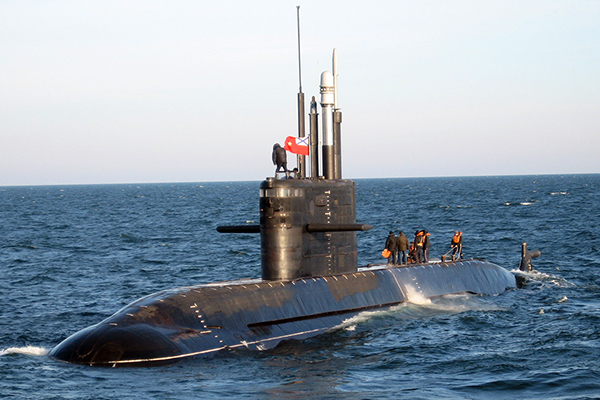Russia has offered to jointly develop with India a non-nuclear submarine based on the Russian Amur-1650 submarine after it stated that it would not be bidding for India’s ambitious Project 75 (India) or P-75I diesel submarine project.
The Deputy Director of the Russian Federal Service for Military-Technical Cooperation, Vladimir Drozhzhov, said on the sidelines of the ongoing Aero India 2023 show that the development of this proposed submarine based on Amur 1650 will include a localization level of up to 80%.
This proposal comes when India is looking to sign an agreement to develop diesel-electric submarines under the P-75I this year. The country issued a Request for Proposal (RFP) to five foreign contenders, including Russia, in 2021.
According to the RFP, the six planned diesel-electric attack submarines are expected to include advanced capabilities such as Air-independent propulsion (AIP), Intelligence, Surveillance and Reconnaissance (ISR), Special operations forces (SOF), Anti-ship warfare (AShW), Anti-submarine warfare (ASW), Anti-surface warfare (ASuW), Land-attack capabilities, and other features.
However, the programme hangs in the balance after most foreign manufacturers that received the RFP, including Russia, decided against competing for the project. While proposing the co-development of the all-new sub, Drozhzhov acknowledged that Russia had backed out of Project 75I’s tender.
“Along with this, we offer our Indian partners a variant of cooperation on this topic, including the joint designing and production of a national non-nuclear submarine under the 75 (I) program based on an intergovernmental agreement,” the Russian official said.
“Taking into account our experience of working with the Indian side on other naval projects, localization of production during the implementation of the program for the construction of Project-75 (I) submarines based on the Russian platform Amur-1650 can be increased to 70-80%.”
Foreign contenders that received the RFP from India withdrew from the tender for two reasons – qualitative requirements with a particular emphasis on Lithium cell Air-Independent Propulsion and a strict liability clause that puts the obligation on the foreign partner for the submarines’ performance despite them being built in Indian shipyards.
Currently, Project 75I has only a single vendor, i.e., a South Korean company that is the only bidder offering a proven fuel cell air-independent propulsion (AIP) system.
Some reports earlier suggested that the project may even be shelved. However, the Navy Chief expressed the service’s commitment to the program before Navy day in December last year.
Several delays have already marred the project. Russia’s proposal, thus, comes at an opportune moment.
Russian Amur-1650 Submarine
Rosoboronexport describes the Amur 1650 as a diesel-electric submarine that belongs to a new generation of Russian non-nuclear submarines. According to the exporter, the vessel has been designed specially to destroy hostile navy surface combatants, transports, and submarines and lead reconnaissance parties.
Regardless of the weather, the Amur 1650 submarine can complete vital global missions. This is significant as India is looking to significantly augment its naval fleet to combat PLA Navy’s expanding presence in the Indian Ocean Region (IOR).
The submarine is equipped with a powerful sonar system with low noise, high levels of automation, and the capacity to fire both torpedoes and the Club-S missile system. As per a report published in TASS in 2019, the submarine that is proposed to be jointly developed by India and Russia would also be equipped with BrahMos cruise missiles.
The submarine can carry anti-ship cruise missiles, adaptable deep-water torpedoes, and mines. It can attack enemy territory-wide terrestrial targets. The data required to launch missiles and torpedoes is created and fed into the submarine’s automated command information system.
The Amur 1650 submarine can have a fuel cell air-independent propulsion system installed, extending its underwater travel time by up to 20 days. The AIP is a core requirement of the diesel-attack submarine to be built under Project 75I and has led to most contenders withdrawing from the tender.
Further, an attack periscope with optical and video linkages (night vision included) and an optronic non-penetrating mast are incorporated into the periscope module of the submarine. The pole is also equipped with antennas for catching signals from satellite navigation systems and radars.
The GLONASS and GPS receivers in the navigation system allow for the precise determination of the submarine’s current location and the motion parameters required for safe navigation and the use of weapons.
A trailing antenna is part of the automated radio communication system and is used to receive secure command signals and data communications at depths of up to 100 meters.
Project 75I will take place under the strategic partnership model, and the capabilities will be developed in conjunction with domestic private players. India has stressed that it needs a higher level of indigenization, including in production.



















